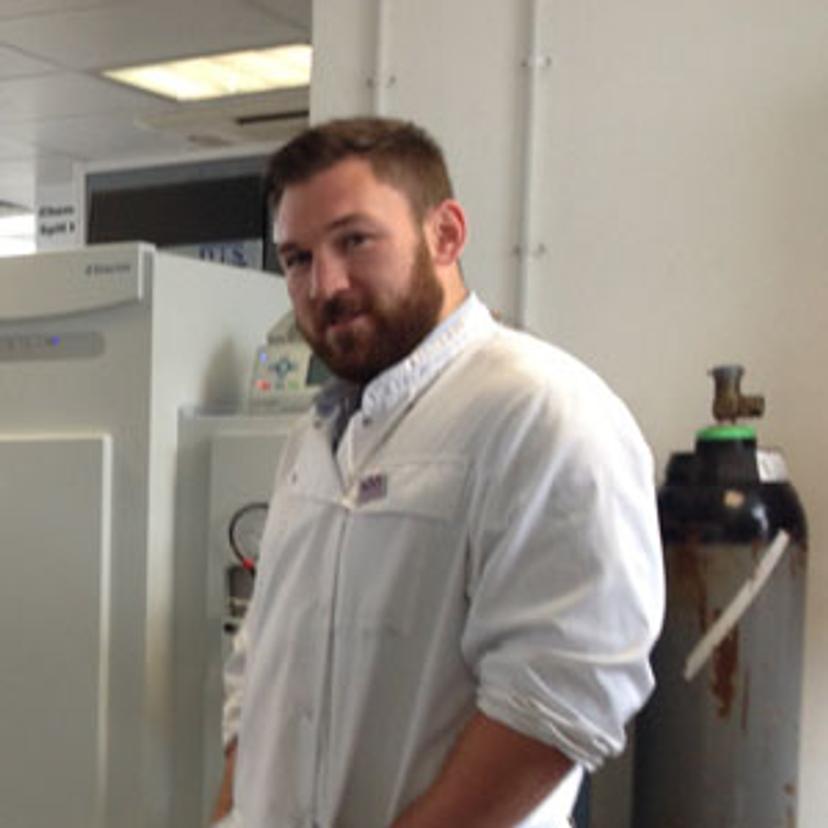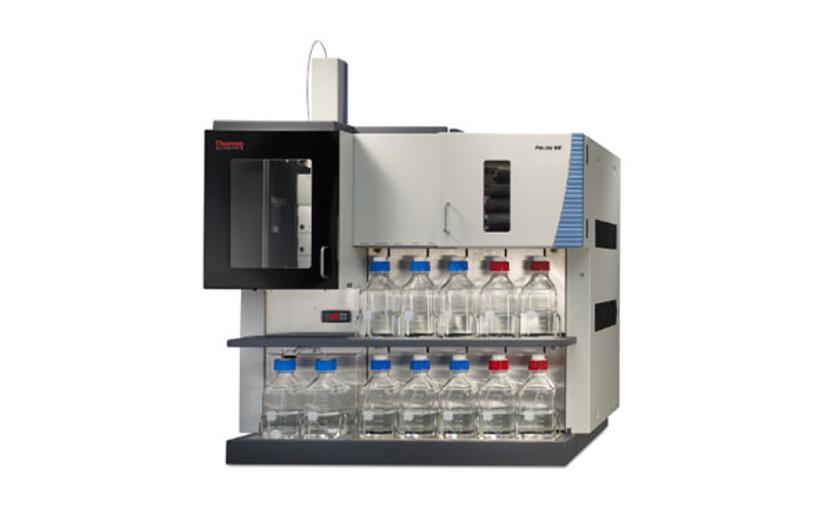Mass Spectrometry Workflow Automation Optimizes Clinical Analysis at Kings College Hospital, London
Clinical Scientist, Lewis Couchman, explains how advances in mass spectrometry workflow automation are improving results at a leading London Pathology Department
4 May 2016

The Scientists’ Choice Award®for Most Successful Clinical Article

Lewis Couchman, Clinical Scientist at Viapath, London, UK Viapath, King's College Hospital, London, UK Viapath is a unique partnership of clinical, scientific and operational expertise, with a mission to transform pathology services in the UK. Viapath is focused on innovation, finding new and better ways to manage the logistics of high-volume pathology testing as well as specialist reference testing.

It took many years for clinical automation systems to progress to where they are today. In contrast MS is only about 15-20 years old
Lewis Couchman, Viapath
Lewis Couchman, Clinical Scientist at Viapath, based at Kings College Hospital, London, and currently completing a part-time PhD looking at the clinical applications of mass spectrometry, discusses advances in mass spectrometry workflow automation for clinical analysis. Read the interview to learn how evolving technology and advances in sample preparation and separation are enabling clinical laboratories to benefit from the improved efficiency and higher quality results that mass spectrometry can provide.
SN: Can you tell me a little bit more about the work that you do at Viapath?
LC: Viapath is one of the largest pathology providers in the UK. Amongst others, we provide services for Kings College Hospital, Bedford Hospital and Guy’s and St Thomas’ Hospital in London, UK. I work in the departments of toxicology and clinical chemistry, where I’m involved in analytical method research and development using high performance liquid chromatography (HPLC) and liquid chromatography-mass spectrometry (LC-MS), and validation of those techniques to ISO 15189 standards and other standards.
Challenging perceptions
SN: What is the current perception of mass spectrometry for use in modern clinical laboratories?
LC: Clinical laboratories increasingly manage samples using total automation systems, or at least a high level of analyzer automation. This is necessary to enable clinical laboratories to process the increasingly large workloads that they receive. Mass spectrometry (MS) technology has not really been suitable for implementation into these types of systems, the technology has been too complicated, too manual and as a result, too time consuming.
Clinical laboratories however, are also increasingly aware of the advantages that MS analysis can offer. In particular, the understanding that in many cases, MS provides superior analytical sensitivity than existing analytical techniques.
SN: How has clinical MS technology changed over the last few years?
LC: What is really important to remember is that it took some years for clinical automation systems, such as those employing immunoassay-based technology, to progress to where they are today – a turnkey solution in which you put barcoded samples in at one end and you get your results at the other.
In contrast, MS is only about 15-20 years old and the automation of MS systems has progressed remarkably in that time. MS instruments are much more robust now, they are smaller and can be coupled to highly automated front-end technology. In the next 10 years I think we will see MS really take-off.
One of the biggest issues faced by clinical laboratories is the sheer volume of samples that require testing. This makes it essential that analyzers are able to continually produce meaningful data and that any downtime is minimized. Solutions that automate sample cleanup and multi-channel options to maximize MS instrument time, allow labs to double or quadruple the amount of data that they can produce. Some modern automated HPLC solutions offer up to four channels, with staggered elution times to the MS, meaning that the analyzer is able to cope with much higher workloads in a shorter space of time.
Good sample prep is vital
SN: How are advances in sample preparation and separation helping labs to use LC-MS?
LC: Good sample preparation is absolutely vital for accurate LC-MS analysis. It’s relatively easy to develop a crude LC-MS method but it may not be very robust, and may suffer from interferences. For example, we’ve been involved with Thermo Scientific™ TurboFlow™ technology which is an ‘on-line’ sample preparation system for LC-MS analysis. Multi-channel, TurboFlow HPLC can be added to a labs existing MS workflow, minimizing manual off-line preparation time by replacing solid protein electrophoresis (SPE) or liquid-liquid extraction. Using this platform, you can directly inject your sample into an LC-MS system.

The Thermo Scientific™ Prelude MD™ HPLC offers a combination of TurboFlow™ technology to automate sample cleanup tasks and multiple HPLC channels.
SN: So is it easier for clinical labs to use MS routinely now?
LC: The advances in MS technology and automated sample preparation all mean that it is easier for clinical laboratories to use MS and run MS assays. Developing an entirely new method and going through the validation procedure can be a more complex process, but once a method is validated, it is straightforward to run, and to train others to run the instruments. We have different grades of staff running our MS assays and reviewing the initial data. We let our instrument software carry out most of the data processing - MS chromatograms tend to be fairly ‘clean’ without many ambiguous or interfering peaks, so you don’t necessarily have to be a MS expert to interpret them.
So yes, it is becoming easier for labs to implement MS now and to take advantage of the analytical power of this technology. One of the most significant benefits for quantitative clinical MS assays is the ability to use an internal standard. With this, and with the chromatographic data produced for every injection, you get a lot of useful information regarding your samples. Because you get more diagnostic data, it’s easier to spot problems that may have occurred during analysis.
SN: Is there anything that Lab Managers need to know with regards to funding?
LC: People assume that MS is really expensive and this is because purchasing the technology can be an expensive capital outlay. But once you have the system up and working, the day to day running costs can be fairly low. Yes, you have to buy columns, but the solvents and consumables are relatively low cost.
With some multi-channel LC-MS options, for some assays you can run up to four times as many samples, meaning that the instrument time is quartered, and capacity is greatly increased. In addition to these potential cost savings, the instruments themselves are more flexible than many other analyzers. You do not have to use assay kits, you can perform laboratory developed tests (LDT’s), you can develop new assays, and you can use a variety of specimen types and perform tests for multiple disciplines in the lab.

The Thermo Scientific™ Endura MD™ MS can be combined with the Thermo Scientific™ Prelude MD™ HPLC to get the quantitative accuracy of LC-MS easily and confidently
SN: What is next for clinical laboratories and MS?
LC: For me the goal of the laboratory is to give the best possible results to clinicians. We are slowly getting to the point where using MS is more readily available and more usable. Using multi-channel platforms, with online sample preparation, makes the technology much more suited to high-throughput clinical labs. But there still needs to be more focus on MS from the relevant scientific societies, along with more online training and courses, to help managers fully take advantage of this technology.
